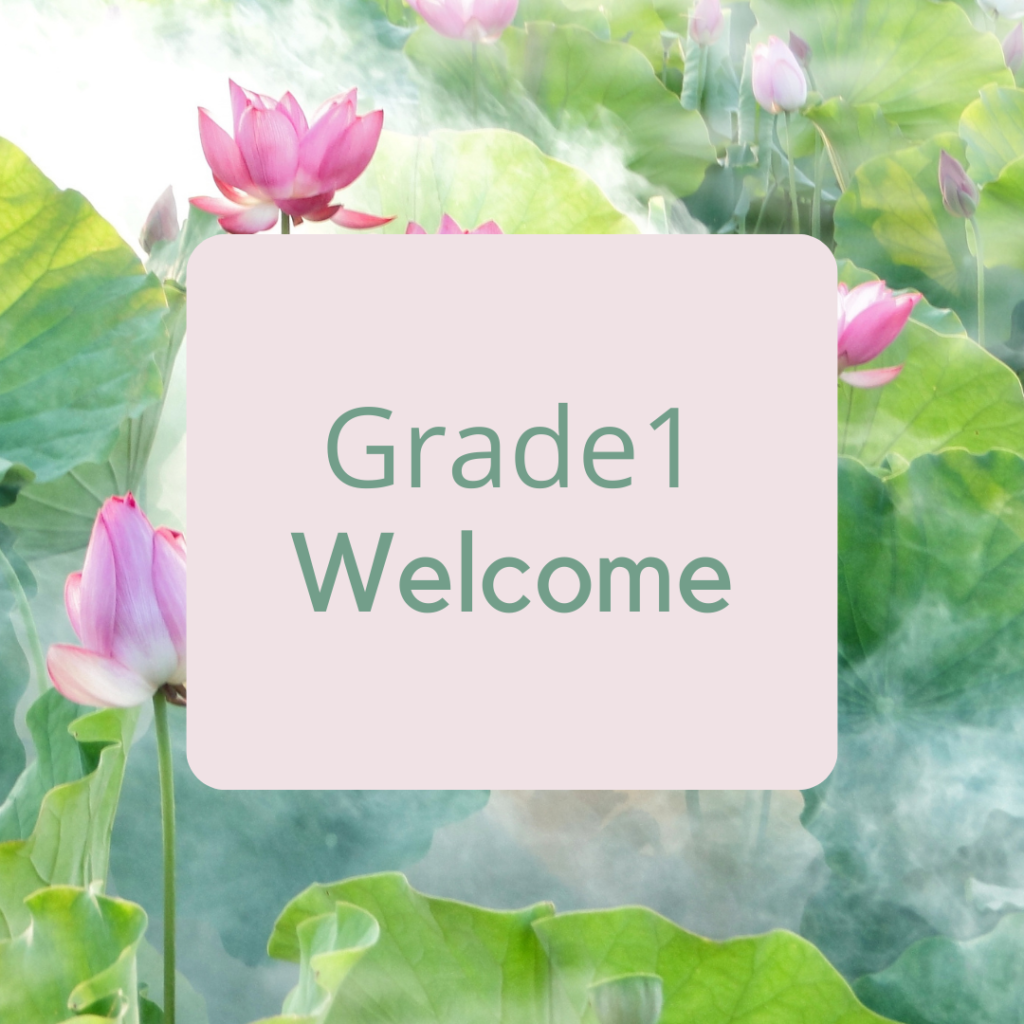
Courage
- What is Courage?
- How are we Courage?
- Why should we practice the virtue of Courage?
- When do we practice the virtue of Courage?

From lessons 17 to 24 we will be memorizing a new prayer and of course, each lesson will have a new quote.
Thy name is my healing, O my God, and remembrance of Thee is my remedy. Nearness to Thee is my hope, and love for Thee is my companion. Thy mercy to me is my healing and my succor in both this world and the world to come. Thou, verily, art the All-Bountiful, the All-Knowing, the All-Wise.

View Here


Memorize
To have courage means to stand for what is right even if we are the only ones who do so, to defend those who need our help even if it causes us discomfort, and to tell the truth even when we know it may lead to difficulties for us. It takes courage to face hardships in life with calm and grace. We draw courage from our love of God and our desire to please Him above all others. To help us remember that we should face every situation in life with courage, let us memorize the following quotation:
The source of courage and power is the promotion of the Word of God, and steadfastness in His Love.
Tablets of Bahá’u’lláh Revealed After the Kitáb-i-Aqdas
Meaning Of Words
Source
- Kyongmi lives in a village in a valley. The melting snow from the top of nearby mountains provides water to the village. The source of the village’s water is snow from the mountaintops.
- Mrs. Putters has three loving and well-behaved children. Her children are a source of joy and happiness to her.
Promotion
- Two of Shoa’s friends started an argument and became angry with each other. Shoa helped each other to see the other’s point of view and make peace. Shoa always promotes peace and understanding among his friends.
- A nurse visits the classroom to teach the children about foods that are good for their health. The nurse promotes healthy eating.
Steadfastness
- Promilla knew that she wanted to be a doctor. She always studied hard in school, and after many years of difficult work, she achieved her goal. She was steadfast in her efforts to become a doctor.
- Zvondai went to a very remote village to help open a new school. Although he missed his family and faced many difficulties, he showed steadfastness and stayed in the village for many years, training teachers and working with children.
Send A Postcard To A Friend
Updated the postcard options

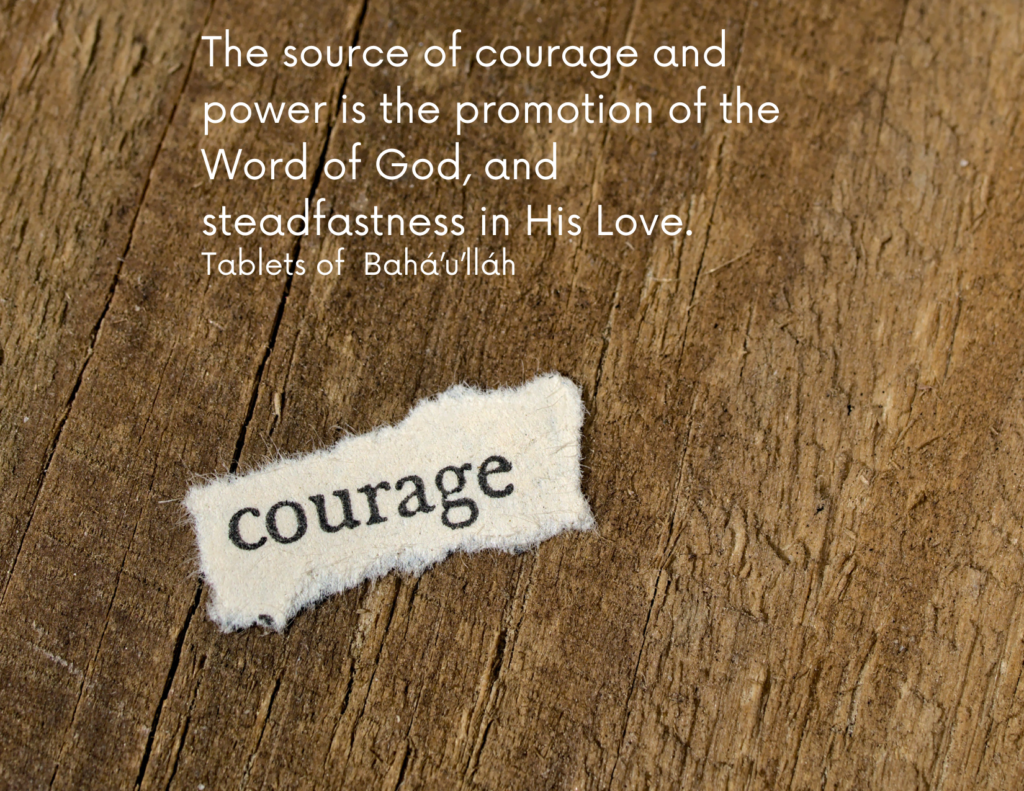


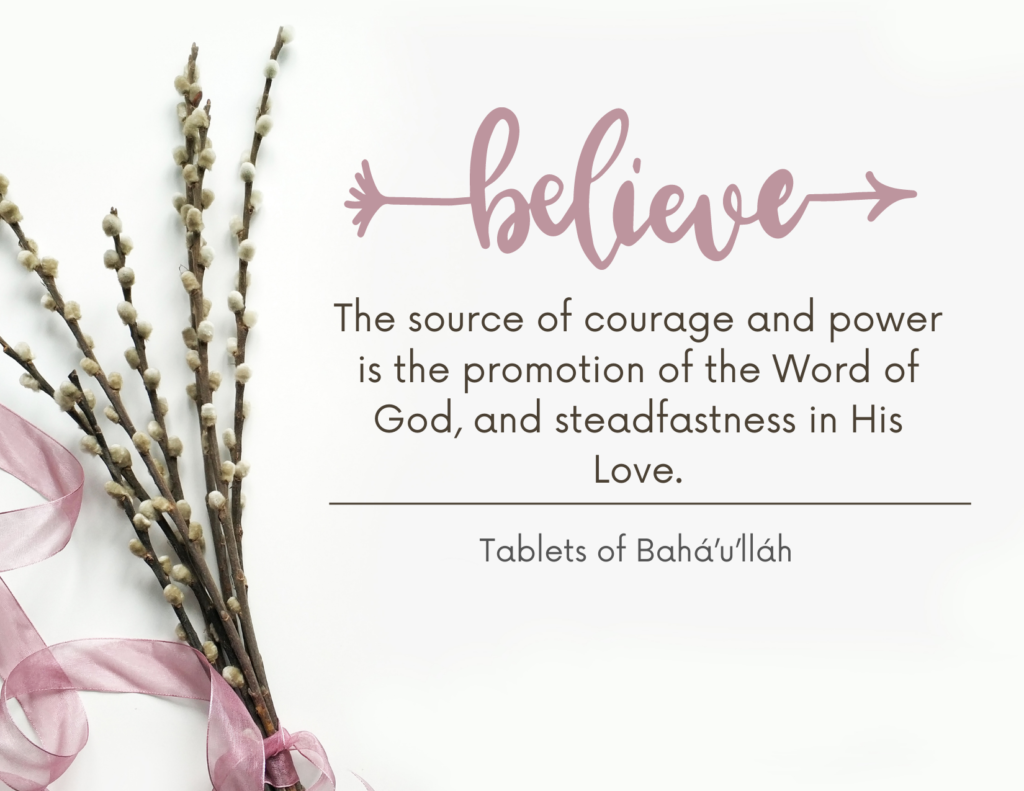

Story About Courage
‘Alí-‘Askar was a merchant in Persia. When he became a Bahá’í, he experienced much hardship at the hands of those who opposed the Faith. Within a short span of time, he had lost all he had. Even so, ‘Alí-‘Askar was not dispirited. Seeing that he would not be able to make a living in his homeland, he decided to move to Adrianople, a city in a neighboring country.
In Adrianople, though he still had little, he managed to acquire a small amount of merchandise. Before he was able to sell a single item, however, he was attacked by thieves who took everything he had in his possession, leaving him with nothing once again.
Not long after, the thieves were arrested, and the great fortune they had acquired from robbing many people was seized. One of the local authorities, dazzled by the riches, came up with an idea to keep the fortune for himself. He called ‘Alí-‘Askar to his office and explained.
“‘Alí-‘Askar,” he said, “these thieves are very rich. In my report to the government, I wrote that the amount robbed from you was great. Therefore you must attend the trial and testify that what I have written is true.” This way, the official thought, all of the money would be returned to ‘Alí-‘Askar, and the two would split it between themselves.
‘Alí-‘Askar knew that he could never go along with such a plan. “Your Honor, Khán,” he replied, “the goods stolen from me amounted to very little. How can I report something that is not true? When they question me, I will give the facts exactly as they are. I consider this my duty, and only this.”
The official tried again to convince ‘Alí-‘Askar. “We have a golden opportunity here,” the official said. “You and I can both profit by it. Don’t let such a once-in-a-lifetime chance slip through your fingers!”
But ‘Alí-‘Askar again refused, saying, “Khán, how would I answer to God? Let me be. I shall tell the truth and nothing but the truth.”
Now the official became angry. If ‘Alí-‘Askar did not go along with his scheme, all his planning would come to naught, and he would lose the great fortune now within his grasp. And so he began to threaten ‘Alí-‘Askar, hoping he could frighten him into cooperating. “I will jail you,” he said. “I will have you banished; there is not a torment I will spare you.” Then he told ‘Alí-‘Askar that, if he did not agree, he would send him back to Persia.
‘Alí-‘Askar only smiled. “Jináb-i-Khán,” he said, “do with me as you please; I will not turn my back on what is right.”

Yes Or No
Begin the game by asking the children to form a wide circle, with you in the center. Now explain to the children that you are going to make several statements. Some of them will be correct; others will be incorrect. Tell them that, if the statement is correct, they should shout out “yes” and hop toward the center of the circle. If it is incorrect, they should shout out “no” and hop backward.
All the statements you make should be based on things the children can readily observe. Examples of “yes” statements are as follows: “The sun gives off light.” “Trees grow from seeds.” “Mountains are tall.” You could also make statements that describe what the children are wearing, like “Sera is wearing a blue shirt,” or what they see in the space around them, like “There are two benches over there.”
A few examples of “no” statements are: “Rain falls upward.” “Fish fly.” “Stones walk on feet.” Again, you could draw on your surroundings to make incorrect statements. Remember that you should have more correct statements than incorrect ones so that, by the end of the game, the children reach you at the center of the circle.
Could do a bunch of spontaneity games to “improve courage” (taken from Rebekah’s Resource lesson)
- 1. Sound Ball — Have the group stand in a circle. One person makes a sound—any sound—while also making a throwing gesture towards another person in the group. That second person then ‘receives’ the sound with a physical motion like catching a ball or a sack or a ray of light and—importantly—repeats the sound sent to them. Then, without hesitation, the first receiver sends a new sound with a new gesture to another person in the circle. Keep the sound moving quickly and boldly to get everyone involved. Make sure to get the body involved and not just the voice. An active, athletic stance—like you would need if you were prepared to catch a real ball—helps loosen up the mind. Encourage kids not to predict or plan what sound they’ll make if the ball comes their way. Better to receive the one sent and then send a new one that emerges of its own accord.
- 2. I Am A Tree – One person starts the scene on stage saying “I am a tree.” Another person joins them, choosing something or someone to interact with the tree. They might say “I am the blue jay calling from the tree branch” and clasp the tree person’s arm. Or maybe they say “I am the water running beneath the roots of the tree” and lie down on the floor to wriggle beneath the tree person’s feet. A third person then joins the first two, choosing their own related identity and action: “I am the lovers’ carving in the bark on the tree” while forming a heart on the tree person’s torso. Dismantle the scene, child by child, possibly in reverse as each child restates what their character is.
- 3. What Are You Doing?—One person stands in the middle of a circle so everyone can see and begins pantomiming an action. Another comes up to the first and gently asks “What are you doing?” The first person continues doing their activity until they come up with something to say that is anything but the activity they’re doing. If I was pantomiming starting a lawnmower, for example, I might say “solving a Rubik’s cube.” The second person then takes on that activity and the first person rejoins the outer circle. Soon thereafter, a third person comes in to ask “What are you doing?” and the game continues. The children can go around in a circle. Can play for elimination i.e. when they respond too slowly, or answer with a true answer…
- Space Walk—This super-adaptable exercise gets kids moving and thinking with their bodies. It also makes a great warm-up for writing. Invite students to walk comfortably through the space paying attention to their own experience. suggest different modes of “walking.” Walk as if the floor is covered with jello, glue, peanut butter, or sand. Walk as if they were wading through ankle-deep, knee-deep, or chest-deep water. Move as if they were on ice. Or try different types of “clothes.” Walk as if you had on boots or Mercury’s winged shoes or wheelies. Try different ages, from toddler to geezer, or different emotions, from eager or anxious to dreary or jealous. Etc.
- Mirror Dance–This game also needs students to find a single partner. Partners should face each other and establish a boundary line between them. That boundary serves as the surface plane of the mirror. At your signal, students should do their best to exactly match the movement of the other in the mirror. Have one student (student A) start leading and then, after a few minutes, switch leadership to student B. Switch back and forth a few times with diminishing periods and eventually let them share leadership.

Previous Post With Crafts on Courage
This post has some crafts and activities from previous lessons on courage
Superhero Mask
Download the template and decorate your mask
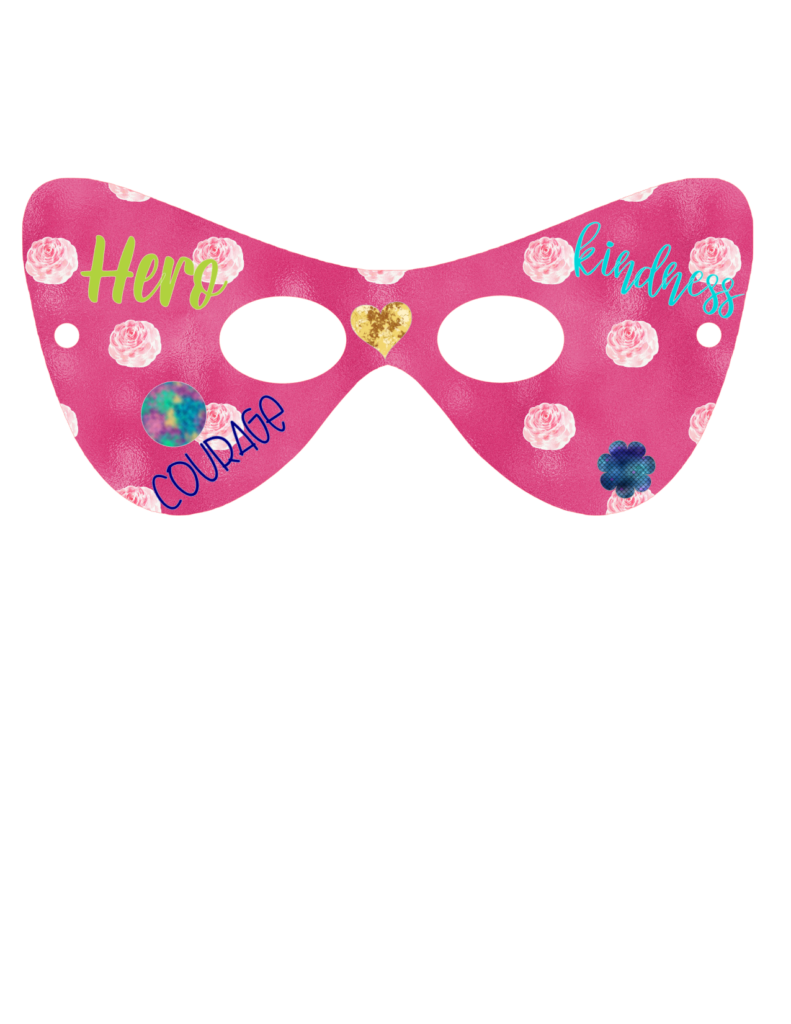
Another Mask to Download
This site has great superhero crafts. Some are paid and others free. Here is the cute mask

Make a Badge of Courage
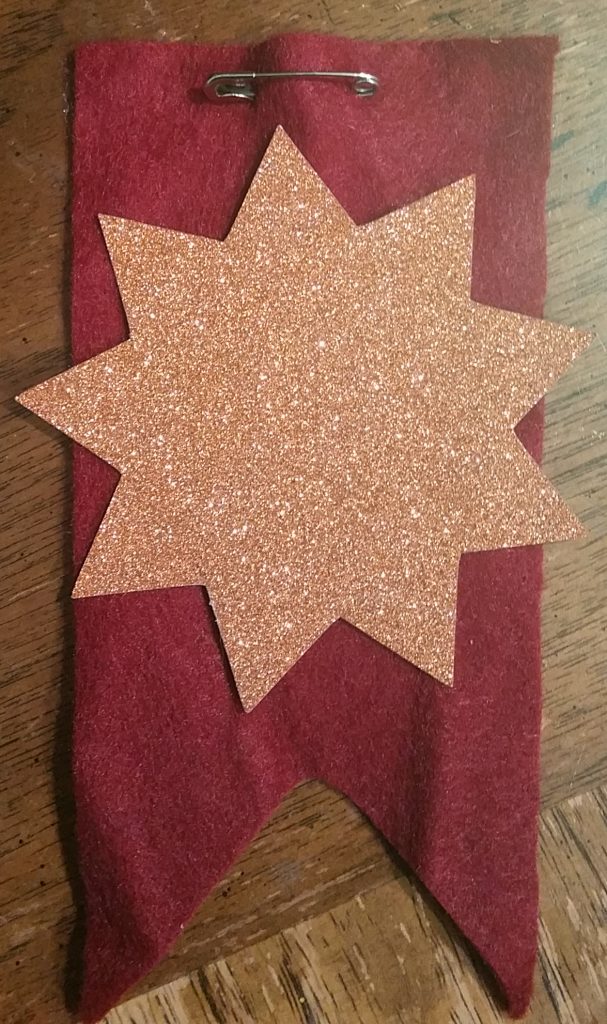
A badge is easy to make, cut some circles large and small out of paper, felt, etc. Layer, add ribbon, and write COURAGE on it. Still not sure? Check out this blog here to make one.
Teachers Pay Teachers
Lots of free Courage crafts and activities. This is another badge of courage to download and make
Courage Token
This one is a cute ” COURAGE TOKEN” made from clay and stamped
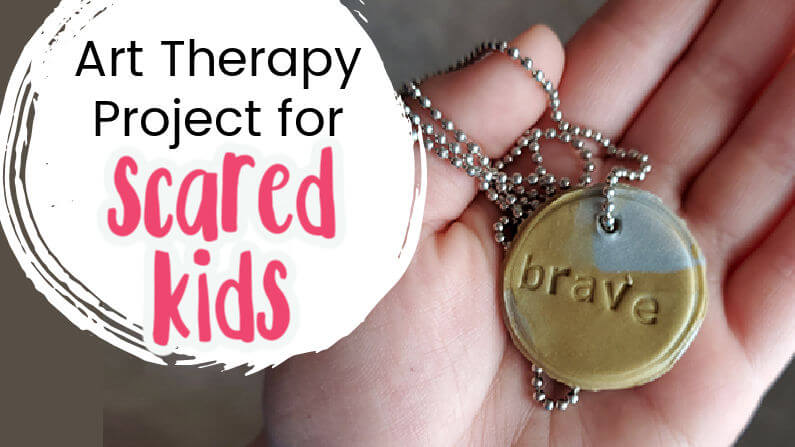
Courage Hero Box
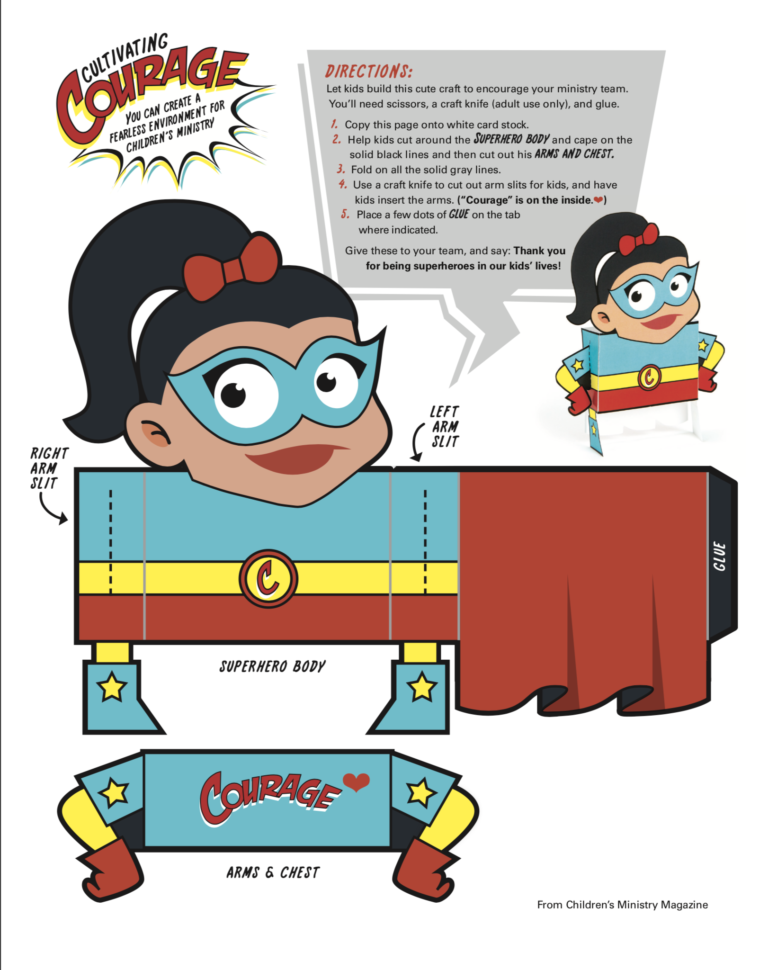
Download the template HERE
A Cup of Courage
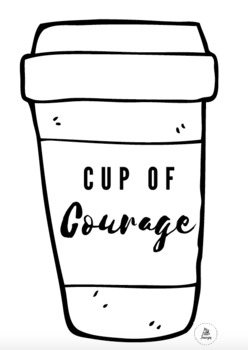
Download the template cup from Teachers Pay Teachers HERE
SUPERHERO PUPPET CRAFT
Make a superhero popsicle stick craft download template HERE

Resources for Courage
Brilliant Star Magazine lesson 17 grade 1
Riverside Baha’i Center Coloring Page

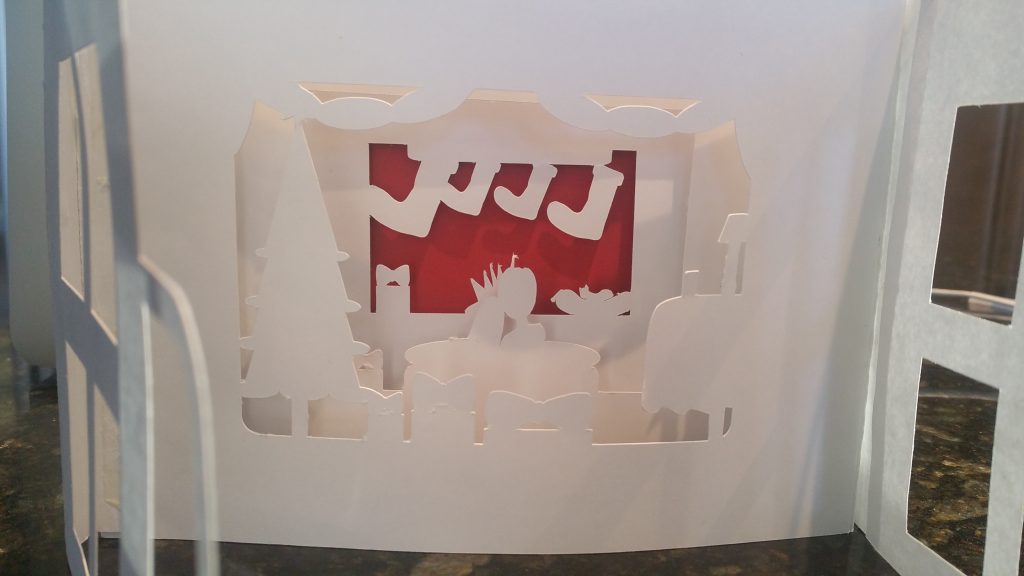
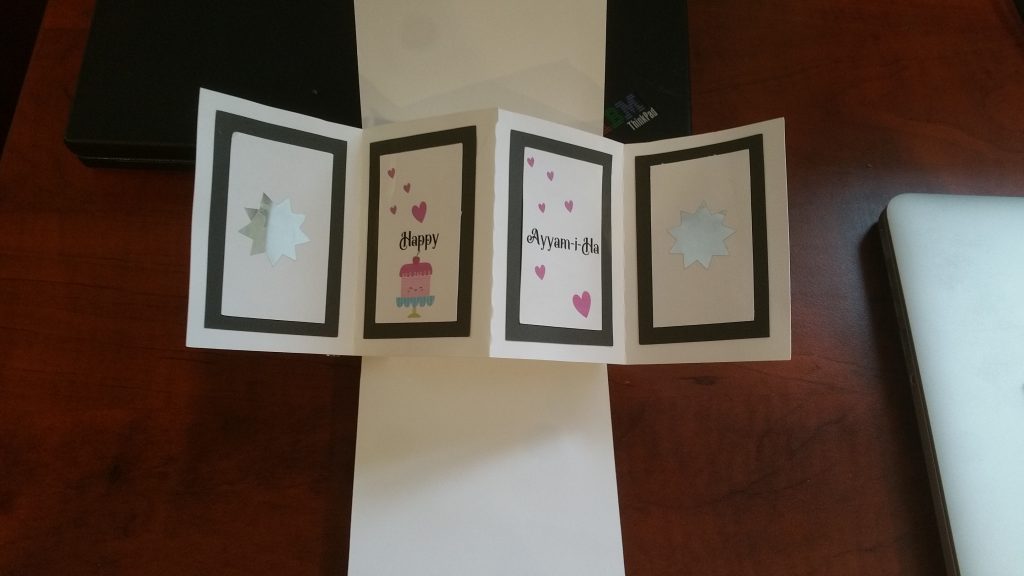
This website has been a source for me to gain inspiration on how i can make my children classes more interesting and fun for the children to learn the virtues quotations and prayers. Thank you so much for your beautiful ideas